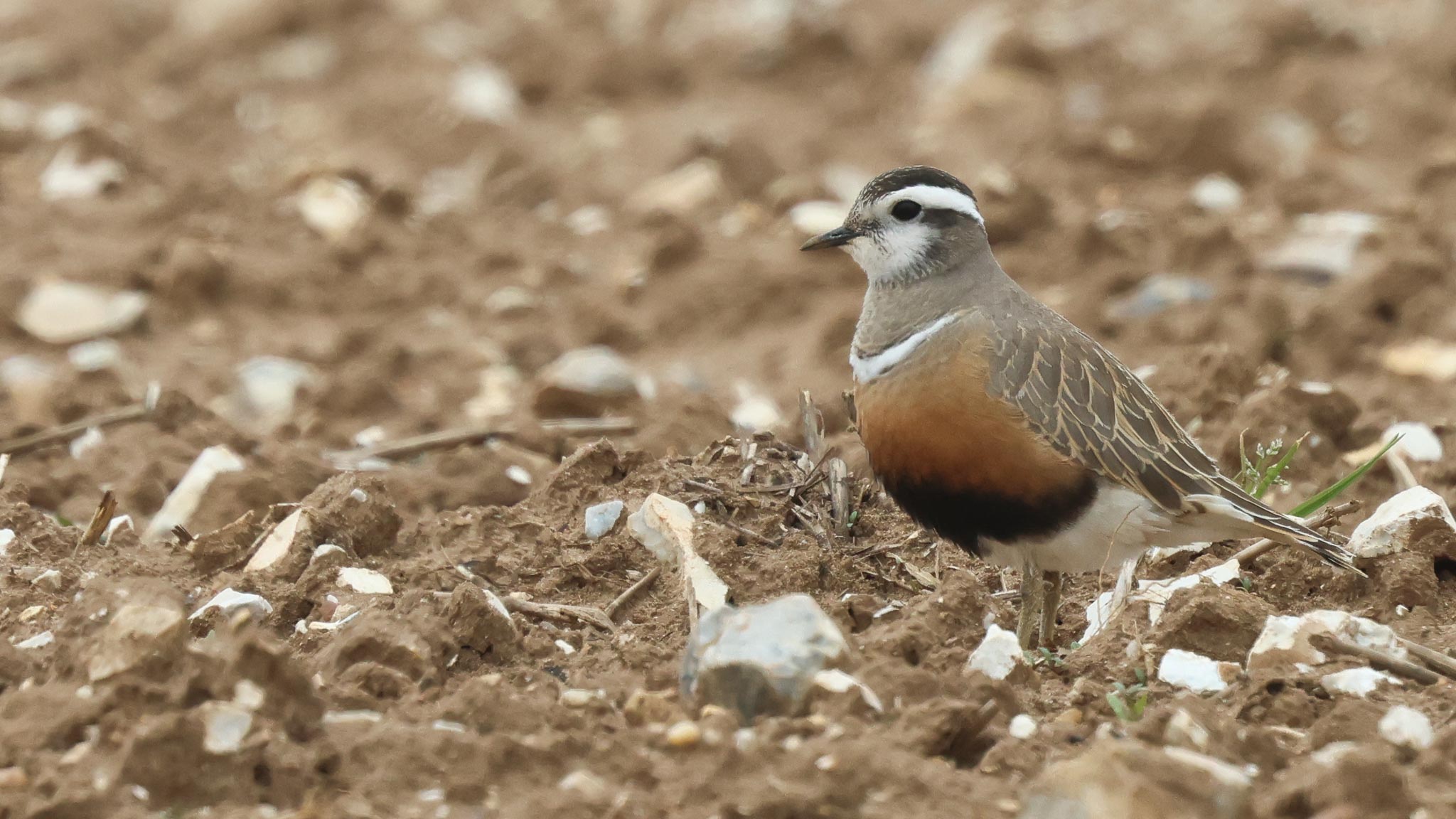Day 3 of a 3-day Winter & Brecks tour today. After two days of nice weather, it was perhaps no surprise that today was different – grey, damp and rather breezy. Thankfully, the rain was only light, spitting with drizzle on and off and only up until 11am this morning after which it stopped, and the wind was nowhere near as bad as forecast. And we had a very successful day, despite the weather, to wrap up our tour.
With the forecast of rain, we headed over to Titchwell this morning, where we would at least have the benefit of the hides if we needed shelter. We cut across inland and as we dropped back down towards the coast, lots of birds flew up from a wild bird seed crop behind and landed in the hedge beside the road. We pulled up and could see they were mainly Brambling, including several smart, black-headed males, with smaller numbers of Linnet and Goldfinch too.
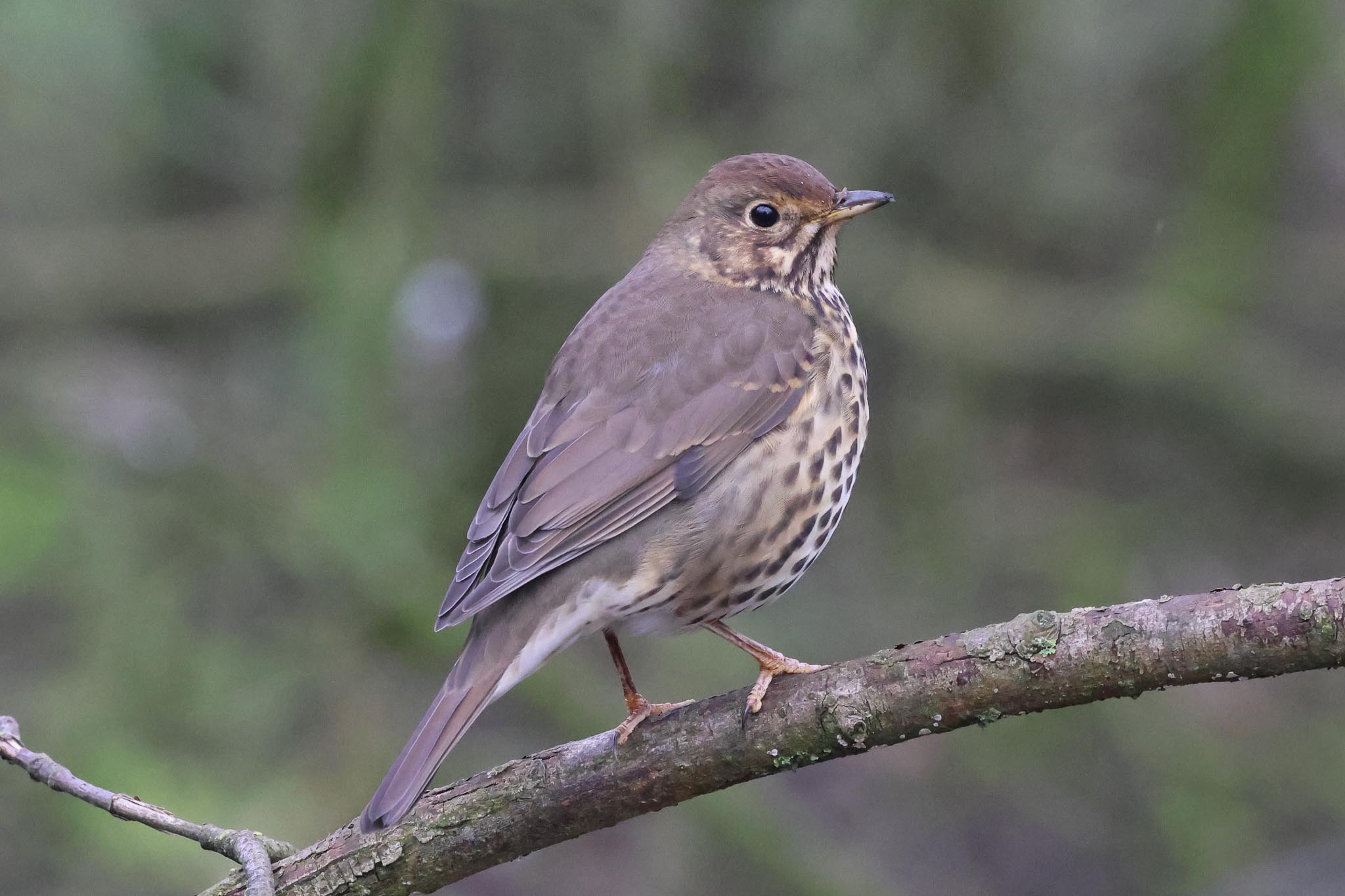
When we arrived at Titchwell, the car park was unusually quiet – probably something to do with the weather today! A succession of Mediterranean Gulls flew over calling as we got out of the minibus and a Song Thrush flew up from the middle of the car park and perched obligingly on a branch on the edge. As we walked up towards the Visitor Centre, we scanned for Woodcock under the trees but it was all rather along wet here today and we then had to pick our way round the flooded path to get past the Welcome Hub.
There weren’t many birds on the feeders today, so we carried on round onto Fen Trail. More scanning this side finally produced a single Woodcock hiding under the sallows. It froze, watching us, relying on its camouflage, while we got it in the scope. It was a fill-the-frame view! Obligingly it waited just long enough for everyone to get a look at it through the scope before it finally decided it had had enough and scuttled off further in.
Further on along Fen Trail, the Tawny Owl was in its usual tree again but today we could at least see more of it. From the first place we set up the scope, we could just see its breast and belly feather, marked with dark streaks. We adjusted position and after a couple of attempts found somewhere we could see a half its face and a dark eye staring back at us from between the ivy leaves.

We continued on round to Patsy’s Reedbed. A couple of Common Pochard were diving over towards the far corner, a couple of Tufted Duck were out in front and a Little Grebe was lurking in the reeds at back. There was a pair of Gadwall too – we got the drake in the scope to admire its intricately patterned plumage. A single Common Snipe was hiding in the cut reeds, before it flew off. There was not much activity out over the reedbed, not a surprise given it was still spitting lightly with rain, although a lone male Marsh Harrier did come up briefly at one point but quickly dropped back in
We walked back round and out via Meadow Trail to the main path. It was windy out when we got out of the bushes and the rain seemed to be getting heavier again. We made our way quickly on to Island Hide. There were not many birds on the Freshmarsh again today. A few Avocets were trying to feed up to their bellies in the deep water. A small group of Black-tailed Godwits was feeding further back, and at one point three flew in and landed closer in front of the hide. Three Dunlin were picking round the muddy edge of the nearest island.
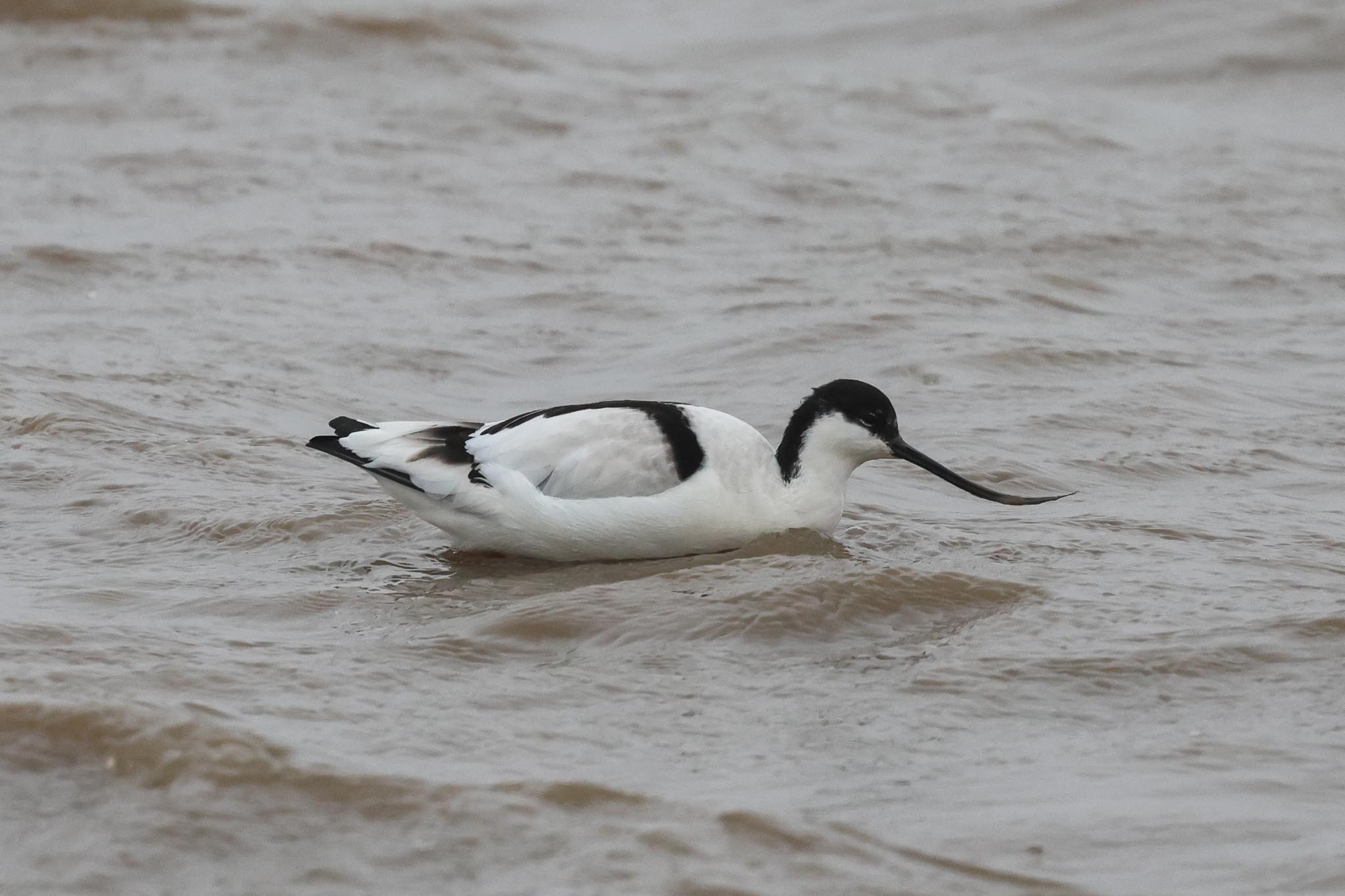
There are not many ducks left on the Freshmarsh either. We did find a pair of Pintail upending over towards the back, along with a few Teal and Shoveler. Gull numbers are down too, at least on the islands closest to the hides, with just a few Black-headed Gulls on the nearest compartment, although a pair of them were displaying.
We braved the weather and walked quickly round to Parrinder Hide. A Scandinavian Rock Pipit was bathing by the bricks as we walked into the hide, then flew up on top briefly before flying off. Then another dropped in right in front of the hide and, after hiding behind a small alexanders plant growing out of the mud, worked up the courage to walk down to the water’s edge to bathe. Nice to see it up close, the Scandinavian Rock Pipits are starting to get pink on the throat and breast, more like a spring Water Pipit and a pitfall for the unwary.

There were a few more gulls on the islands over on the back compartment, including several smart adult summer Mediterranean Gulls with the Black-headed Gulls. We got them in the scopes, admiring the more extensive jet black hoods and thicker white eye-liner on the Mediterranean Gulls, along with their heavier red bills and white wing-tips. There were a couple of Dunlin on the mud in front of the hide and two Knot dropped in to bathe in front of Avocet Island.
It had stopped raining again, so we headed out to brave the path on to the beach. A large flock of Brent Geese was feeding out on the saltmarsh and several Redshanks, Curlews and a couple of Grey Plover were on the muddy channel on Volunteer Marsh.
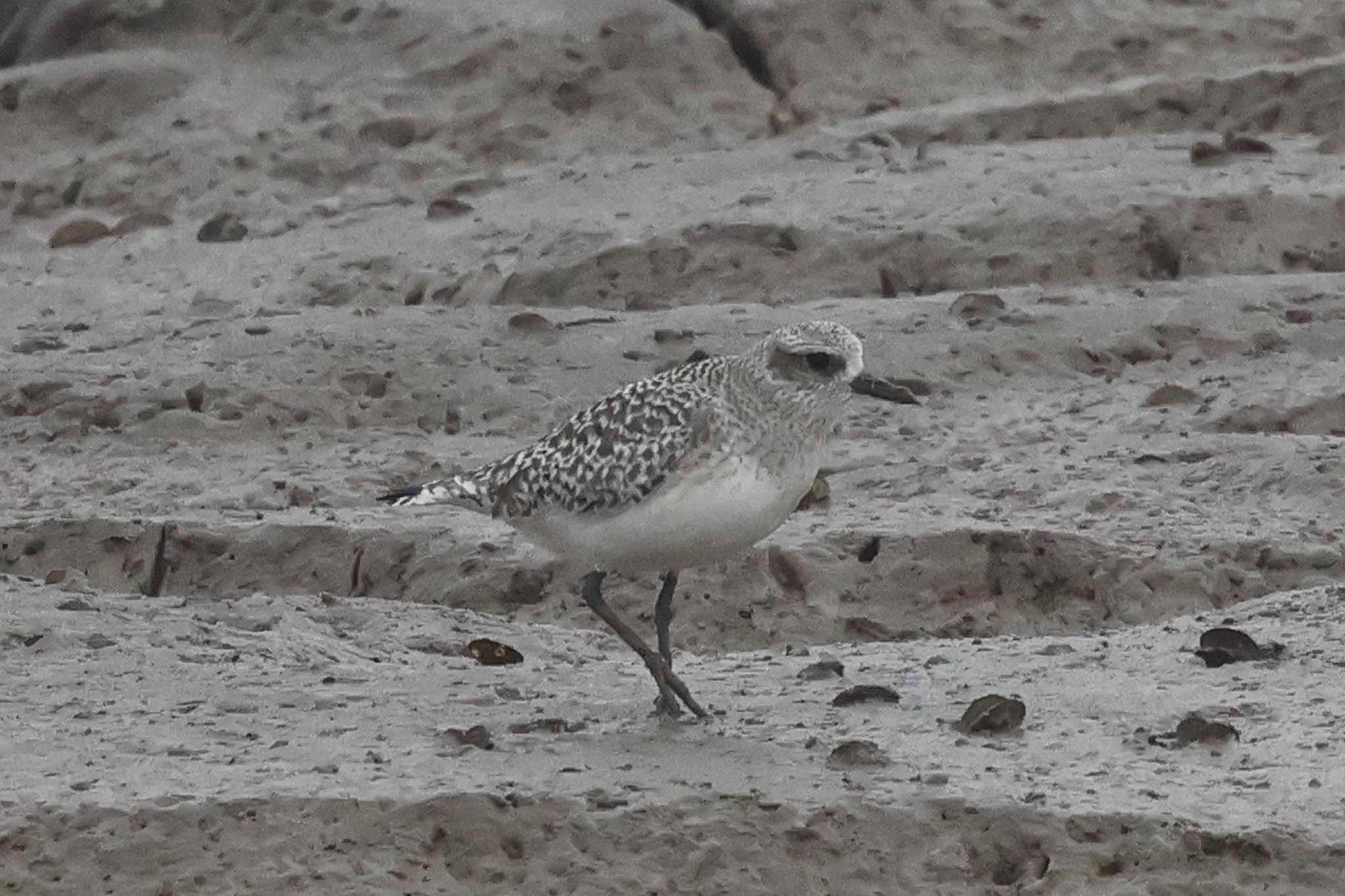
The tide was out so there were no waders on the Tidal Pools, but we did stop to admire several close Pintail, which even started to display at one point. There was a pair of Red-breasted Merganser here too, the male preening on a tiny island before going to sleep and the redhead female diving along the far edge.
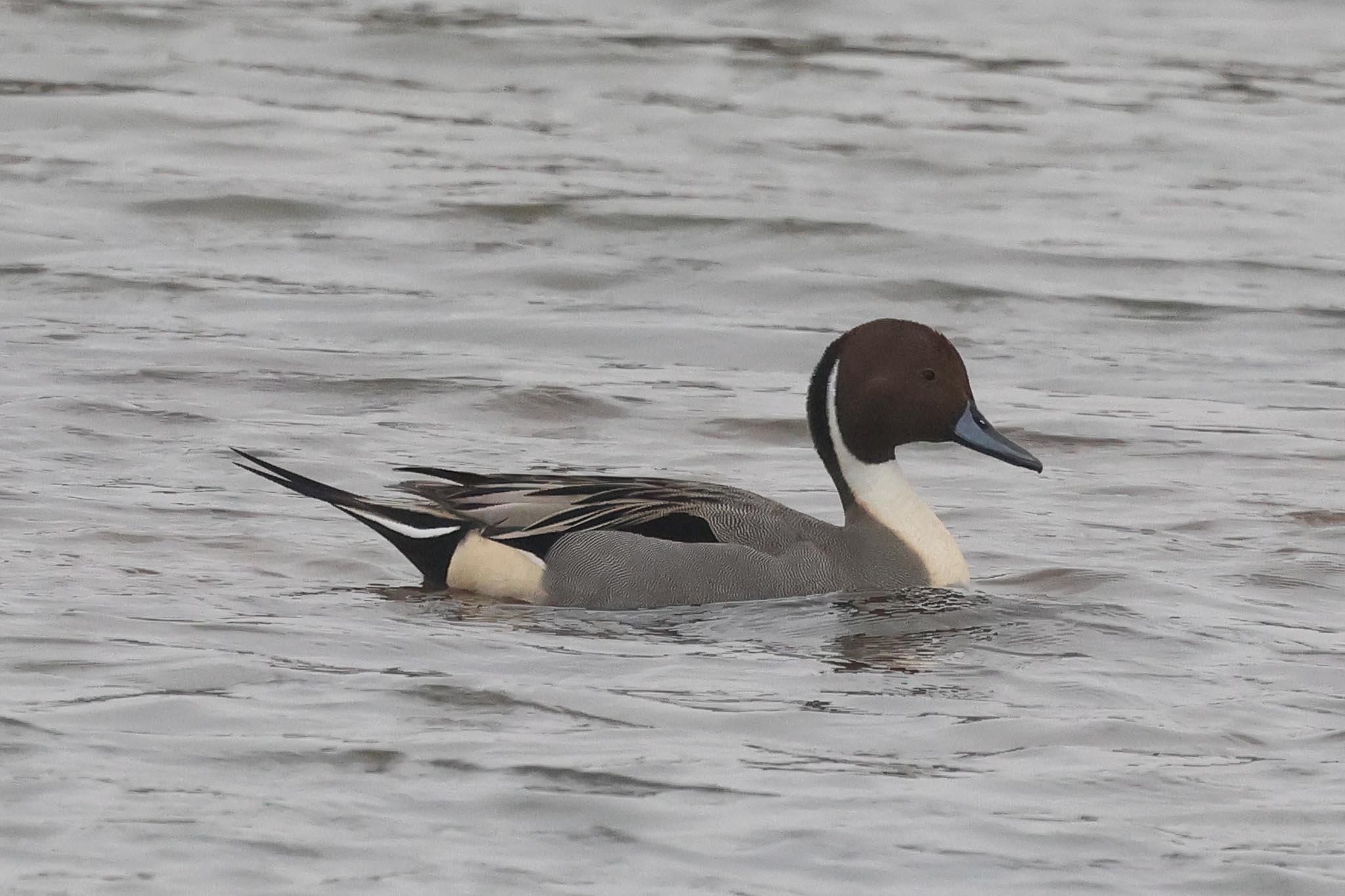
Out at the beach, we got ourselves into the shelter of the dunes. There were a few waders down on the shore – several Bar-tailed Godwits, Sanderling and Turnstones. A small raft of Common Scoter were just offshore, but kept disappearing in the waves. One of the volunteers was seawatching and got a message on his radio to say that there was a Spoonbill on Thornham saltmarsh. We couldn’t see it from here but as we made our way back, we kept scanning and picked it up when we got to the Freshmarsh, feeding in one of the saltmarsh pools. It was hard to see, feeding most of the time with its head down, but we got it in the scope, and it lifted its head from time to time so we could see its bill.
Further back, we stopped to look for some Pink-footed Geese which had been reported on Thornham grazing marsh, and quickly found three of them in the grass. We could compare them with some Greylag Geese in the same field too. We turned the scope on a Chinese Water Deer out on the saltmarsh as well.
We were just saying that it was not a good day to look for Bearded Tits, it was too windy, when we heard them calling and turned to see four climbing up the reeds just behind us. They were moving quickly along the back edge of the borrow pits, but we had great views of them out in the open, particularly when one of the males stopped to climb up a reed stem and perched in full view for a few seconds, giving us a good chance to admire its black moustache.
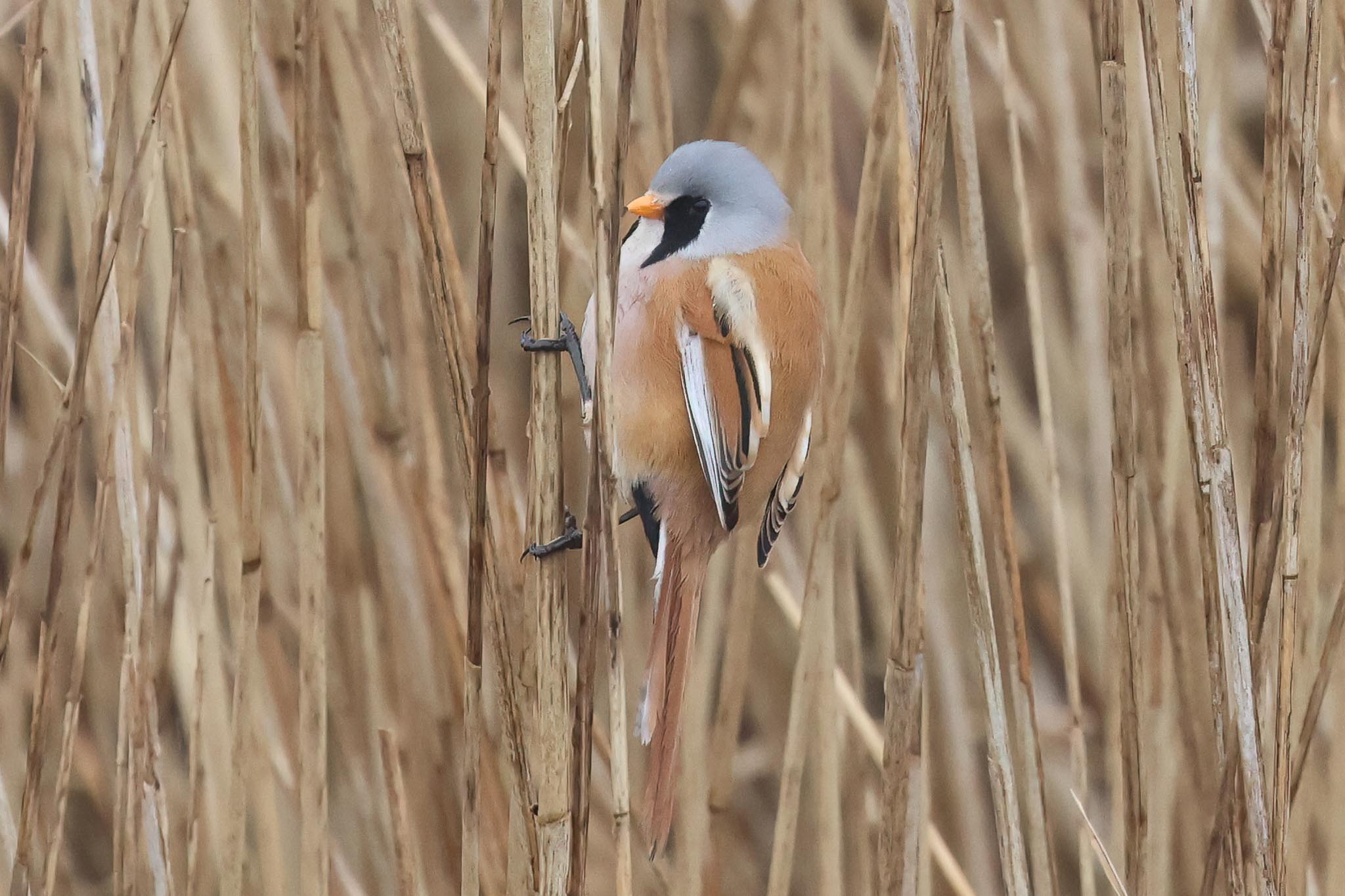
Back at the Visitor Centre, we were planning to have an early lunch on the picnic tables, but we found that the picnic tables by the Centre were standing in water and the picnic area was flooded too. We decided to head back east and find somewhere else. We had a quick stop at Brancaster Staithe first, adding Ringed Plover to the list, and getting closer views of Bar-tailed Godwits. We watched the Oystercatchers picking through the discarded mussels, and Turnstones running around the car park too. A 2nd winter Mediterranean Gull was standing on the mud with three Herring Gulls.

Continuing on, there was no sign of any Cattle Egrets in the fields at Burnham Norton, but a quick look from the layby at Burnham Overy Staithe revealed several closer Pink-footed Geese in with the Greylags by the road. We had a much closer view now and could see their pink legs! Further on, seven White-fronted Geese were in the field by the road at Holkham today, so we stopped and got out. Again, it was a much closer view compared to yesterday. Three Barnacle Geese flew in again too.
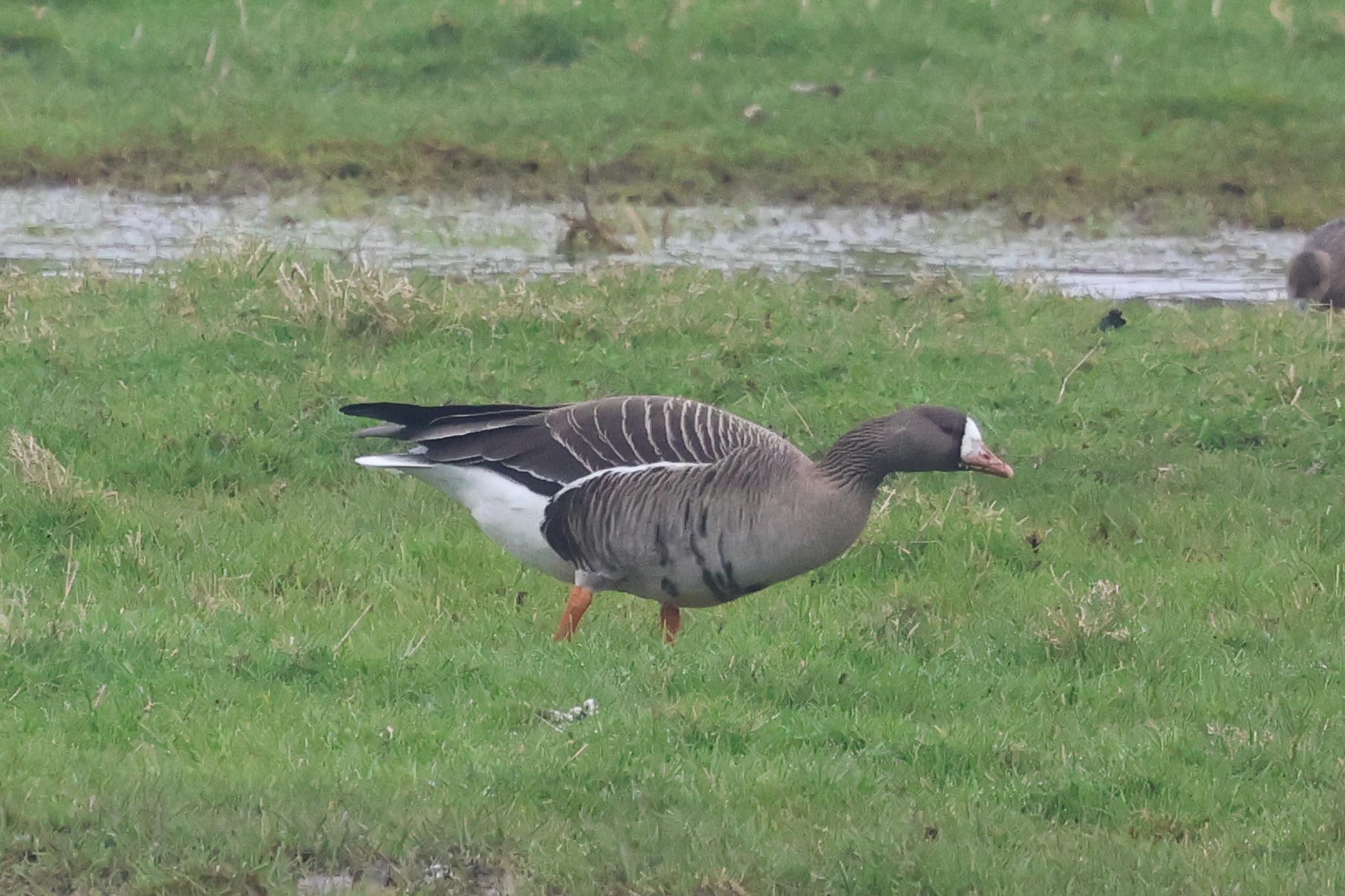
We stopped at Lady Anne’s Drive and walked up to The Lookout for a later than planned lunch. At least we could get out of the chilly wind, even if it wasn’t raining any more. Afterwards we drove round to Wells beach car park. We thought it might be very windy out on the edge of the harbour today, looking out to the east, but it was actually not as bad as expected. There were a couple of Bar-tailed Godwits, a Grey Plover and a Curlew on the near edge of the channel and lots of Oystercatchers on the sand beyond.
Two male Red-breasted Mergansers came swimming quickly up the channel, one chasing after the other. The chasee swam on, and then started displaying to itself, while the chaser eventually turned back and joined up with two females which had appeared behind.
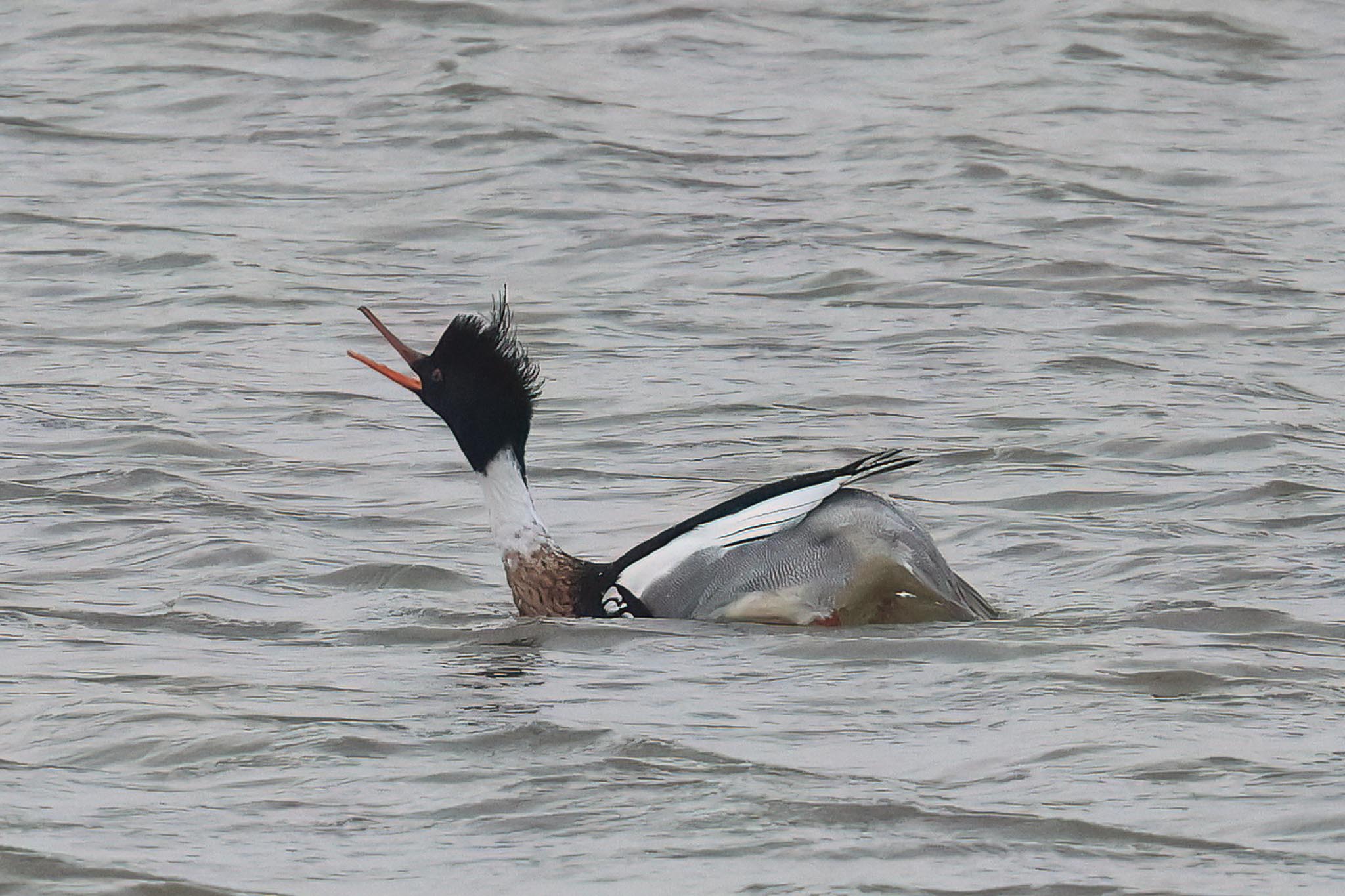
Round at the old lifeboat station, there were more waders on the mussel beds and mud opposite – a distant flock of Knot and Dunlin was feeding at the top of the beach, along with Ringed Plovers and Grey Plovers, and a flock of Bar-tailed Godwits whirled round the other side of the channel and landed again, but we couldn’t find any Greenshank today.
Back to the minibus, and we still had time for one last stop this afternoon. The Glossy Ibis had been seen on the flood east of Stiffkey village for the last couple of days, so we decided to have a look for it. We parked in the layby and crossed the road onto the permissive path the other side of the hedge. We were just walking down the path and turned round to answer a question from one of the group when we noticed a large bird of prey flying over the trees behind us. It looked big for a Buzzard and then we realised – it was a juvenile White-tailed Eagle!

We watched it fly across the road and out over the field the other side, stopping to do a quick circle, before it then continued on inland. Over the wood beyond, it flushed all the corvids and a Common Buzzard came up too for a nice size comparison. The White-tailed Eagle really was huge!
This bird is a Dutch-ringed juvenile White-tailed Eagle which was born in 2023, and then taken into care following a collision with a wind turbine and ringed, before being released. At some point it crossed over to the UK and spent most of the winter in Suffolk, before setting off north a couple of weeks ago. It has since been wandering the North Norfolk coast, though often disappearing inland. We had hoped to see it this weekend, but there had only been a couple of brief sightings of it flying over different places on the last couple of days so we were very lucky to catch up with it here now.
We continued on down to the corner of the footpath to view the flooded grazing marshes. As we came out of the trees, we realised the Glossy Ibis was very close, feeding in the pool right by the path. We edged out slowly, being careful not to spook it or all the other birds feeding on the pool and then we were able to watch it feeding in the shallow water. It caught a stickleback, washed it and then swallowed it. Then it flew slightly further back.

The flood waters have started to recede a little now, and there were lots of waders here enjoying the fresh mud. Lots of Black-tailed Godwits included some smart rusty ones getting into breeding plumage already. There were groups of Ruff too, one striking bird with a buff head was probably a white-headed bird which had somehow stained its feathers. There were lots of ducks as well, Wigeon and Teal, and a couple of Pintail asleep further back.
With everyone heading off this evening and with long drives ahead, it was time to head back now. It had been a great way to wrap up, with a White-tailed Eagle and the Glossy Ibis, and it had been a very enjoyable three days with lots of good birds.








